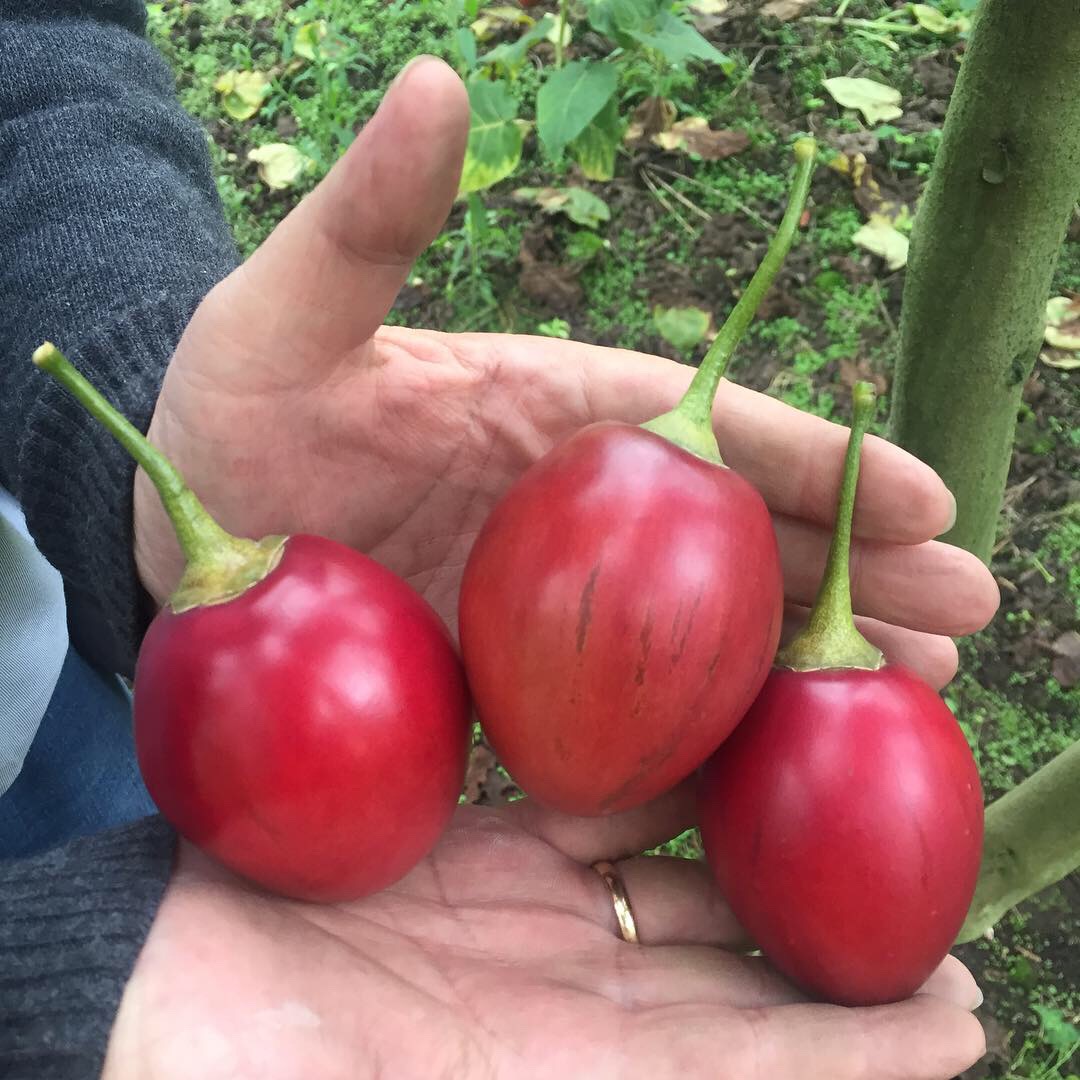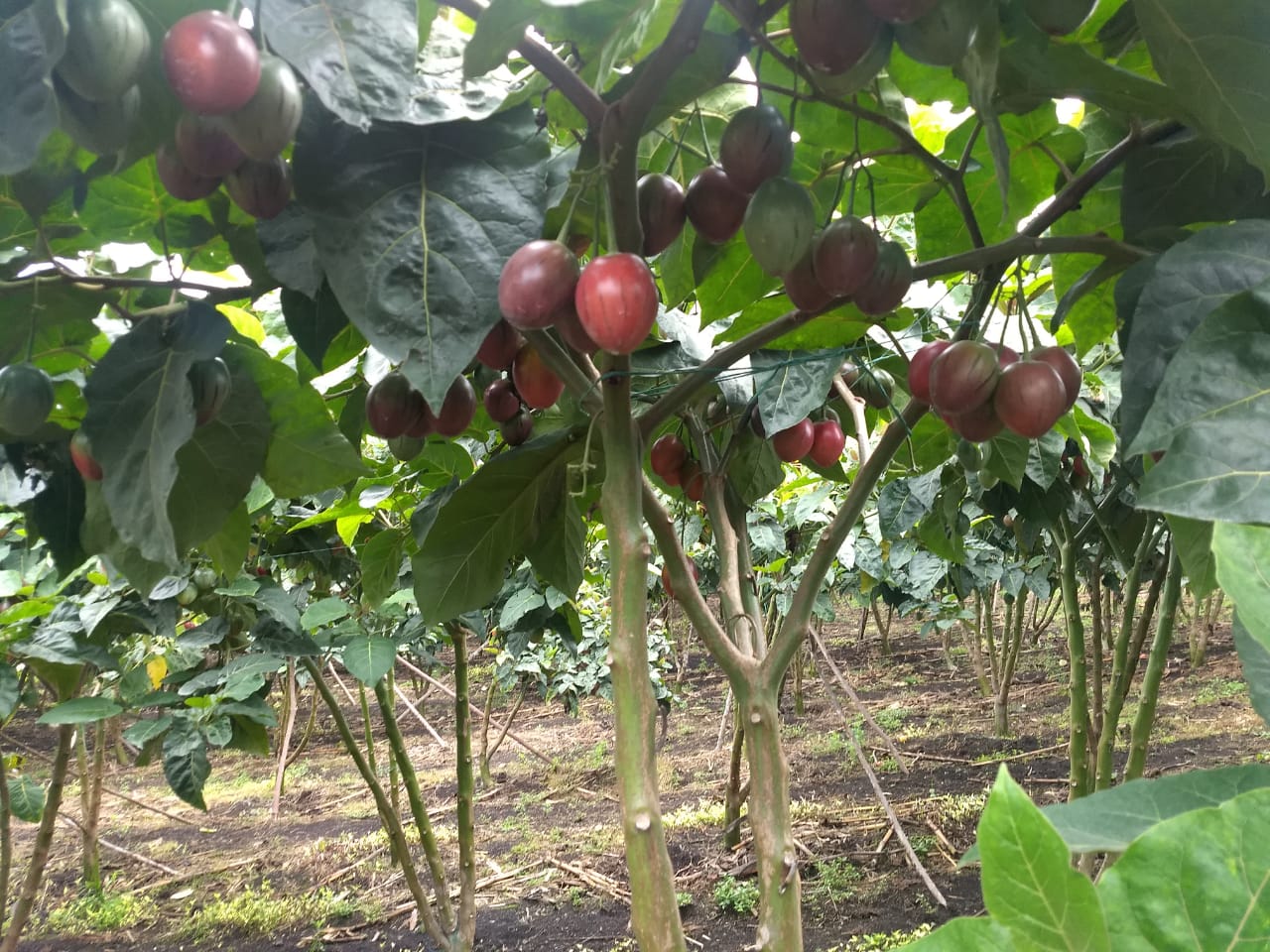TAMARILLO
The tamarillo is an exotic fruit whose shape and appearance reminds a lot of tomato, hence it is popularly known by the names of tree tomato, tomato or cifomandra French. The tamarillo or tree tomato (Cyphomandra betaceae) belongs to the family Solanaceae. It is a perennial species, succulent, persistent leaf. Equivalent name is tamarillo.
It is native to the Andean region of South America, but is cultivated as a less fruity in various regions. In some countries it is commonly found in home gardens where fruit used to prepare sauces for domestic consumption. Also it is known as the “Chinese tomato”.
The fruits of this tree (Solanum betaceum or Cyphomandra betacea) are fleshy, oval or elliptical and yellow, orange or purple with a pleasant taste. Its flesh is slightly acidic, aromatic and rich in vitamins and minerals.
In the Andean regions tamarillo is grown in areas with altitude of 1000-2800 meters. It is a fruit adapted to climates of moderate temperature (annual average between 15 and 25 ° C).
In the Andean region climates average temperature between 17 and 19 ° C are recommended. It is sensitive to severe frosts, so it presents some problems of adaptation in Mediterranean climate regions, and to -2 ° C no death of twigs and mature leaves.
-
It is low in calories and rich in fiber fruit
-
It is regarded as one of the fruits that strengthen the brain
-
It helps to cure migraines and severe headaches
-
Prized for its benefits on skin
-
It has substances such as gamma amino butyric acid lowers blood pressure
-
It is applied to treat sore throats
-
Fasting is beneficial to alleviate the symptoms of flu
-
It helps prevent and reduce the risk of degenerative, cardiovascular disease and cancer, due to its high content of antioxidants
-
It helps in iron absorption
-
Combining the pulp with sugar
-
In salads (slices)
-
Juiced
-
In shakes
-
In gelatins
-
In jams
-
In sauces
-
In cocktails
-
In ice cream
-
infusions
NUTRITIONAL CONTENT
| CONTENT PER 100 GRS PULP | UNIDADES |
| Water | 86% |
| Proteins | 2,4 gr |
| Carbohydrates | 17,3 mgr |
| Dietary fiber | 10,9 gr |
| Magnesium | 29 mgr |
| Sodium | 28 mgr |
| Ash | 1,2 gr |
| Potasium | 348 mgr |
| Vitamin B6 | 0,06 mgr |
| Vitamin C | 20 mgr |
| Total fat | 2,8 gr |
| Folic acid | 20 mgr |
| Calories | 0,3 gr |
| Fiber | 20 mgr |
| Vitamin A | 48 mgr |
| Ascorbic acid | 7 mgr |
| Calcium | 10 mgr |
| Phosphorus | 64,4 mgr |
| Iron | 0,9 mgr |
| Niacin | 0,1 mgr |
| Rivoflabina | 0,1 mgr |



